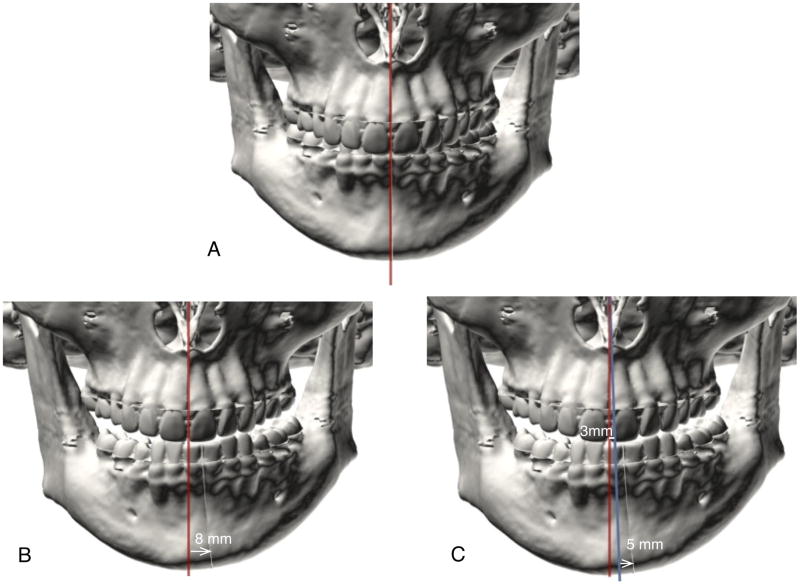Fig. 16.
Limitations of the orthogonal best-fit method. (A) A perfectly symmetrical subject. (B) The subject develops unilateral (right) condylar hyperplasia, causing her jaw to shift 8 mm to her left. Because her jaw grows fast, the rest of the face, including the upper jaw, remains unchanged. (C) A computer builds a sagittal plane using the orthogonal best-fit method (blue line). On evaluating the face using this sagittal plane, it will be concluded that the upper jaw is right-deviated by 3 mm and that the chin is left-deviated by 5 mm. We know this is not true; only the lower jaw is deviated.

